Biographies
Satunuku “Tode” Sakugawa (1733-1815)
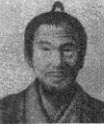
The mysterious Kusanku of a Chinese envoy settled in Okinawa for some time.His most famous student was Satunuku “Tode” Sakugawa (1733-1815). It is believed Sakugawa became a student of Kusanku in 1756. Sakugawa was a student of Takahara Peichin (1683-1760) (Peichin is a title of status) until the arrival of Kusanku in Okinawa. At that time Sakugawa was granted permission from Takahara Peichin to train under Kusanku.
Sakugawa traveled to China with Kusanku to study Kempo. He returned to Okinawa in 1762 to introduce this fighting method. Before long Sakugawa was considered an expert in the Chinese hand fighting method. It is said that Sakugawa was awarded the title of Satonushi for his services to the Okinawa King.
Sakugawa soon started to teach the Chinese hand way in Okinawa. Combining what both his teachers had taught him, he structured a training system. This made him the first Okinawan teacher of Tode. Many of his students rose to greatness. Among them were Chokun Satunku Macabe, Satunuku Ukuda, Chikuntonoshinunjo Matsumoto, Kojo, Yamaguchi (“Bushi” Sakumoto), Unsume, and Sokon “Bushi” Chikatosinumjo Matsumura.
It would be Sakagawa’s student, Sokon Bushi Matsumura, who would be considered the forefather of many Karate styles.
1. Studied Kenpo in China.
2. A student of Takahara in Okinawa and Kusanku in China.
3. Awarded title of “Satunushi”, a social class two levels below the royal family.
4 First teacher of “Tode” (later to be known as karate) in Okinawa.
Sokon “Bushi” Matsumura (1797-1889)
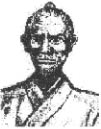
Sokon (Title of honor) Bushi (Warrior) Matsurmura’s (1797-1889) first teacher was seventy eight years old and a past student of both the great Takahara Pechin (Pechin is a title of status) (1683-1760) and Kusanku (Chinese official). His name was Tode (Chinese hand way) Sakugawa (1733-1815). Matsumura was the last of many students of Sakugawa but became the most famous. Many years later Bushi Matsumura studied with a Chinese trader named Chinto. It is believed Bushi Matsumura created the kata Chinto after his teacher from the movements he had taught him. The Royal family of Sho acquired Bushi Matsumura for their service. There he became Chief Tode Instructor and a bodyguard of the King. Some time later around 1830 he traveled to China to study Shaolin Gong-fu (Kempo or Fist method). Most secret of what Bushi Matsumura learned was the White Crane method. This system he taught only to his son, Nabi Matsumura (1860-1930). As part as an envoy of the King he had the opportunity to travel into the his great Chinese province of Fukien. It is believed while there he studied under Ason and Iwah, both military attaches. The title “Bushi” was given to him by King Sho for accomplishments. Many times Bushi Matsumura had to prove his ability against foe, though never was he defeated. Tode was the system of Te practiced among the upper class. The art of Te (hand) as it was known in Okinawa had three names. Each representing the township it was taught in. They were Tomari-te, Naha-te and Shuri-te. Bushi Matsumura being in the township of Shuri taught Shuri-te. After many years the name Shuri-te was replaced with Shorin-Ryu. Bushi Matsumura retired and moved to Sakiyama village in Shuri. He had many students, among them were Yasutsune Azato, Yasutsune Itosu, Choshin Chibana, Choki Motobu, and Chotoku Kyan. It would be his son who would past on his purest teachings known as Shorin-Ryu. Later this system was pasted onto Nabe Matsumura’s nephew, Sokon Kohan (1889-1920). 1. Forefather of Shorin-Ryu
2. A student of Satunuku Sakugawa
3. Awarded title of “Bushi” by King Sho Tai of Okinawa
4. Worked as a body-guard for three different Okinawa kings
Yasutsune “Ankoh” Itosu (1830-1915)

Yasutsune Itosu was born in the city of Shuri, Okinawa. At the age of 16 he started to train in Karate with Master Sokon “Bushi” Matsumura.
He was a very close friend of Matsumura’s uchi deshi (private student), Yasutsune (Ankoh) Azato and was furthermore a student of Shimpan Gusukuma and Yasuri, Iwah’s uchi deshi.
He is famous for being instrumental in the introduction of Karate in the public school system curricula. To help the teaching process he developed the Pinan kata, basing it on the advanced kata like: Kushanku, Passai, Chinto and Jion.
Itosu is recognized for the high technical levels that he attained. Gichin Funakoshi remarked on his physical strength, his incredible ability to withstand blows, and his tremendous grip.
Master Funakoshi recounts that neither Master Itosu nor Azato ever bragged about their “heroic” achievements in karate and they would explain that those “crazy things” were to be blamed on their youth.
Itosu was a master that had several important students, many of which went on to create a series of differing Karate styles (even though it was never his intention to have this happen).
One of his most famous students was Gichin Funakoshi, someone that always remembered him throughout his life as a great example of what a great master should be and tried to transmit the teachings he received from him.
1. Master of Shuri-te (the hand of Shuri)
2. Student of Sokon Matsumura and Kosaku Matsumora
3. Considered with Higashionna to be the two most important 19th century Okinawan Karate Masters
4. Introduced Karate-do to the Okinawan public schools in 1901.
Kanryo Higashionna (1851-1915)

Grandmaster Kanryo Higaonna (Higashionna was the original Okinawan pronunciation) was born on March 10, 1853, in Naha, the capital city of Okinawa. His father, Kanyo, worked as a merchant sailing between the small islands of Okinawa, trading everyday goods. From a young age Kanryo Higaonna helped his father in this work. This was strong physical labor, that helped Higaonna develop a strong body. Kanryo Higaonna was still in his teens when his father died suddenly.
Higaonna began his martial arts training in 1867 in Monk Fist Boxing from Aragaki Seisho. In 1870, at the age of 16, he traveled with his instructor to Fuzhou, China. Once in Fuzhou, he studied the Chinese martial arts under the great Master RuRuKo (Xie Zhonhxiang in Chinese). RuRuKo was the founder of Whooping Crane gongfu and was a student of Pan Yuba who was in turn the student of Lin Shixian, a master of White Crane gongfu. Higaonna also received instruction from numerous other gongfu masters including Wai Xinxian. Hiagaonna remained in China for approximately 13 years. In addition to studying the empty hand way and the weapon arts, he also became accomplished in herbology and Chinese medicine.
Chojun Miyagi (founder of Goju-Ryu and successor to Higaonna) said of Higaonna, “My sensei possessed incredible strength; the severity of the training he underwent in China is beyond comprehension…. Kanryo Sensei’s speed and power were truly superhuman; his hands and feet moved faster than lightning”. Words cannot express his real ability. We can only say that his skill was incredible, but even this fails to do him justice.
In the year 1881, he returned to Okinawa where his martial arts would become known as Naha-te though he always referred to it as chuanfa. Kanryo Higaonna taught these martial arts to the people of Okinawa and at the same time continued his own research and practice. In order to teach the youth of Okinawa he developed a teaching method that was specifically designed to develop the mind and body; to improve both physical well-being.
The first occasion on which the previously secretive art of Naha-te “opened” to society in general, occurred in October 1905, when Higaonna began teaching at the Naha Commercial High School. When teaching, Higaonna was an extremely hard task master. However, in his everyday life he was a quiet and humble man and one who was renowned for his virtuous character. He was a person who had no need or desire for worldly things. He lead a simple life that was devoted to the study and practice of martial arts.
There are many stories that relate tales of Kanryo Higaonna’s life and training. The power of his legs was legendary and he was often referred to as “Ashi no Higaonna”, (“legs Higaonna”) in Okinawa. His virtuous character was widely known and respected, and because of his popularity the people of Naha bestowed him with the name Obushi Higaonna Tanmei. This name reflected the affection and respect they had for this great man and supreme martial artist.
Kanryo Higaonna’s unparalleled skill in the martial arts aside, his great and distinguished work was in bringing the Chinese martial arts from China to Okinawa, and from there spreading these arts among the people of Okinawa.
Kanryo Higaonna is now bestowed with the title “Kensei (sacred fists) Kanryo Higaonna” a title which is eminently fitting. His name is synonymous with Okinawan martial arts and Naha-te, and his spirit is destined to live on forever as a great and valued treasure within Okinawan culture.
Kanryo Higaonna’s whole life was devoted to karate. He passed away in December 1915 at the age of 63.
1.Master of Naha-te
2.Studied Kempo in Chinas Fukien pronince under Liu Liu Kung
3.Considered with Itosu to be the two most important 19th century Okinawan Karate Masters
4.Noted for his extraordinarily powerful Sanchin Kata.
Gichin Funakoshi (1868-1957)
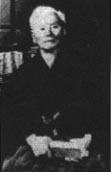
Master Gichin Funakoshi is widely considered the primary “father” of modern karate due to his efforts to introduce the Okinawan art to mainland Japan, from where it spread to the rest of the world. Born in 1868, he began to study karate at the age of 11 and was a student of the two greatest masters of the time, Azato and Itosu. He grew so proficient in the art that he was initiated into all the major styles of karate in Okinawa at the time.
For Master Funakoshi, the word karate eventually took on a deeper and broader meaning. Funakoshi chose the characters kara (empty) and te (hand) for their meaning in the zen philosophy; to empty oneself of selfish and/or negative thought, for only with a mind clear of all emotional fears and anxiousness can a karate-ka achieve their ultimate goals. Training in karate-do became an education for life itself.
Master Funakoshi was the first expert to introduce karate-do to mainland Japan. In 1916 he gave a demonstration to the Butokuden in Kyoto, Japan, which at that time was the official center of all martial arts. On March 6, 1921, the Crown Prince, who was later to become the Emperor of Japan, visited Okinawa and Master Funakoshi was asked to demonstrate karate. In the early spring of 1922, Master Funakoshi traveled to Tokyo to present his art at the First National Athletic Exhibition in Tokyo, organized by the Ministry of Education. He was strongly urged by several eminent groups and individuals to remain in Japan, and indeed he never returned to Okinawa.
Master Funakoshi taught only one method, a total discipline, which represented a synthesis of Okinawan karate styles. This method became known as Shotokan, literally the clan or the house of Shoto, which was the Master’s pen name for his poetry, denoting the sound of the wind blowing through pines.
1.Founder of Shotokan
2.A student of Ankoh Itosu and Yasutsune
3.Considered the “father” of modern day karate
4.Felt that the Japanese martial art should be labeled karate (empty hand), since no weapons were used.
Chojun Miyagi (1888-1953)

Grandmaster Chojun Miyagi was born on April 25,1888. He began his Karate training in Shuri-te and at the age of 14 was introduced to Kanryo Higaonna with whom he began his study of Naha-Te. Like his teacher before him, he progressed very rapidly because of his great natural talent and fierce determination. The training was severe beyond belief at times, but he practiced ever harder with an enthusiasm unmatched by any of the other students. Chojun Miyagi became “uchi deshi” (private discipline) of Kanryo Higaonna. He studied with his teacher for 14 years before his teacher’s death in 1915.
Chojun Miyagi, as successor to Naha-te, pushed himself to the limits of endurance in his desire to emulate his teacher’s extraordinary skill. In 1915, he journeyed to Fuzhou, China, the city where his teacher had studied martial arts to further his research. This was one of three trips he made to China during his lifetime.
On his return to Okinawa he began to teach the martial arts out of his home in Naha. Later, he also taught at the Okinawan Prefecture Police Training Center, at the Okinawan Master’s Training College, and at the Naha Commercial High School (where his teacher had once taught).
Chojun Miyagi worked hard to spread Karate throughout Okinawa and mainland Japan, and to earn Naha-te a status equal to that of the highly respected Japanese martial arts of Judo and Kendo. To achieve this he traveled frequently to mainland Japan where he was invited to teach at Kyoto University, Kansai University and Ritsumei Kan University. In 1933, Goju-Ryu Karate was the first Okinawan martial art to be registered at the Dai Nippon Butoku-Kai, the center for all martial arts in Japan. This was a milestone for Karate as it meant it was recognized on a level with the highly respected martial arts of Japan.
Chojun Miyagi dedicated his whole life to Karate. He was responsible for structuring Naha-te (which he later named Goju-Ryu) into a systemized discipline which could be taught to society in general. This teaching system that he formulated enabled Karate to be taught in schools for the benefit of the young, and to reach vast numbers of people throughout the world. However, his private teaching at his home remained strictly in adherence to the principles and traditions of his teacher, Kanryo Higaonna, and his teacher before him, RuRuKo.
The naming of Goju-Ryu came about more by accident than by design. In 1930, Chojun Miyagi’s top student, Jin’an Shinzato, while in Tokyo demonstrating the Karate of his teacher, was asked as to what school of martial arts he practiced. As Naha-te had no formal name he could not answer this question. On his return to Okinawa he reported this incident to Chojun Miyagi. After much consideration, Chojun Miyagi chose the name Goju-Ryu (hard and soft school) as the name for his style. He took this name from a line in the “Bubishi” (a classical text on martial arts and other subjects). This line, which appears in a poem describing the eight precepts of the martial arts reads, “Ho Goju Donto” (the way of breathing is hardness and softness).
1.Founder of Goju-Ryu (hard-soft way)
2.A student of Kanryu Higashionna
3.Introduced Kenwa Mabuni to Higashionna.
Kenwa Mabuni (1889-1952)
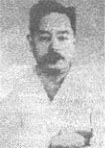
Of all the traditional karate systems Shotokan, Goju-ryu, Wado-ryu, Shorin-ryu, Kyokushin, and Shito-ryu among them Shito-ryu remains the most obscure. Several of its leading practitioners, such as the charismatic Fumio Demura and the prolific Teruo Hayashi, do have widespread fame, yet Shito-ryu remains little understood outside its own schools. Shito-ryu had been most often described as a combination of Shotokan and Goju-ryu. It is also generally known that its teachers utilize formal exercises (kata) from many Okinawan sources. Unfortunately, such explanations fail to adequately describe just what Shito-ryu really is.
In truth, Shito-ryu, along with Goju-ryu, Wado-ryu and Shotokan, is one of the four major karate systems of Japan proper (the Japanese islands excluding Okinawa). It was founded by Kenwa Mabuni (1889-1952), who, like most of karate’s old masters, was descended from Okinawa’s so-called warrior (bushi) class or aristocracy. Members of his family served Okinawan lords for hundreds of years. Mabuni started karate training at the age of 13 under Ankoh Itosu (1830-1915), the man who organized early karate in the Okinawan school system. Itosu was a student of one of Okinawa’s most famous karate masters, Sokon Matsumura (1792-1887), the forefather of Shorin-ryu. Itosu took a strong liking to his young pupil and Mabuni learned some 23 kata before the elder man died. Itosu’s death so grieved Mabuni that he built a shrine in front of the master’s grave and stayed close by for a year, practicing his kata daily.
Itosu was not Mabuni’s only teacher, however. While still in his teens, Mabuni was introduced by his friend, Chojun Miyagi (the founder of Goju-ryu karate) to Kanryo Higashionna (1853-1915). From Higashionna, Mabuni learned Naha-te, a Chinese-influenced karate style. Mabuni also trained under the reclusive Arakaki Kamadeunchu (1840-1918), who taught a style similar to Higashionna’s. Arakaki also taught Tsuyoshi Chitose (the founder of Chito-ryu), Gichin Funakoshi of Shotokan, and Kanken Toyama of the Shotokan school. Arakaki, who was an acknowledged bo (staff) expert, taught Mabuni the unshu, sochin, niseishi, arakaki-sai and arakaki-bo forms. During the 1920’s the insatiable Mabuni participated in a karate club operated by Miyagi and Choyu Motobu, with help from Chomo Hanashiro and Juhatsu Kiyoda. Choyu Motobu was a master of Shuri-te (the antecedent of Shorin-ryu) and Gotende, the secret grappling art of the Okinawan royal court. Hanashiro was also a Shuri-te expert, while Kiyoda came from the same Naha-te background as Miyagi. Known as the Ryukyu Tode Kenkyu-kai (Okinawa Karate Research Club), this dojo (training hall) was one of history’s gems. Experts from diverse backgrounds trained and taught there, and it was there that Mabuni learned some Fukien white crane kung fu from the legendary Woo Yin Gue, a Chinese tea merchant living on Okinawa.
By this time, Mabuni had become a highly respected police officer and made several trips to Japan after Funakoshi introduced karate there in 1922. Mabuni spent many of his early traveling years with Koyu Konishi, a friend and sometimes student who later founded Shindo-jinen-ryu karate. In 1925 Mabuni and Konishi visited Japan’s Wakayama prefecture where Kanbum Uechi, the founder of Uechi-ryu, was teaching. It was after training with Uechi that Mabuni devised a kata called shinpa. But Mabuni actually spent most of his time in Osaka, where he taught at various dojos, including the Seishinkai (the school of Kosei Kokuba). Choki Motobu also taught at Kokuba’s dojo. It was Kokuba who later formed Motobu-ha (Motobu faction) Shito-ryu. In 1929, Mabuni moved permanently to Osaka. Shortly thereafter, the Japanese martial arts sanctioning body, the Butokukai, pressured all karate schools to register by style name. At first, Mabuni called his style Hanko-ryu (half-hard style), but by the early 1930’s Shito-ryu was the official name. It was coined from alternative renderings of the names of Mabuni’s two foremost teachers, Itosu and Higashionna. Not everyone agreed with separating Okinawan karate into factions through the use of style names. In fact, Shotokan headmaster Toyama questioned Mabuni and others about their use of what he called “funny-sounding names.” Mabuni countered that giving the style a name would not only satisfy the Butokukai, but would give people something they could identify with and feel a part of.
Among Mabuni’s earliest students was Kanei Uechi (not to be confused with Kambum Uechi’s son of the same name), who by 1935 was also teaching in Osaka. In 1950, Uechi returned to Okinawa and established the Shito-ryu Kempo Karate-do Kai. On Okinawa, Uechi is considered the true successor to Mabuni’s art, but internationally, Mabuni’s eldest son, also named Kanei, is acknowledged as the head of Shito-ryu and runs the Shito-kai. Kanei Mabuni and his younger brother Kenzo head the karate programs at several universities, a task inherited from their father. Still other early students of Mabuni have their own distinct organizations and followings. Ryusho Sakagami, a contemporary of Kanei Mabuni, established the Itosu-kai just after Mabuni’s death. Sakagami’s son, Sadaaki, now oversees the Itosu-kai from the Yokohama area. In 1948, Chojiro Tani organized the Shuko-kai, where he taught Tani-ha Shito-ryu. Ever innovative, the Shuko-kai, under the present leadership of Shigeru Kimura in the United States, appears somewhat different in technique from the other Shito-ryu groups.
Since the 1970s, several other Shito-ryu factions have formed. Most prominent Hayashi-ha Shito-ryu under Teruo Hayashi. Hayashi was a protage of Kosei Kokuba and also trained directly under Mabuni. Hayashi became president of the Seishin-kai sometime after Kokuba’s death. For awhile, he co-led that organization along with Motobu-ryu style-head Shogo Kuniba. Together they integrated the Tomari-bassai kata into their systems. The assertive Hayashi even studied in Okinawa under Kenko Nakaima, head of the longtime secret family art of Ryuei-ryu. Ryuei-ryu is derived from the same Chinese teacher who taught Kanryo Higashionna, a man named Liu Liu Kung. Another, younger member of the Motobu-ha group, Chuzo Kotaka, established Kotuku-ha Shito-ryu in Hawaii, revising all the kata and devising many new ones which he taught to his American students. In Europe, a Tani-hashito-ryu student named Yoshiano Nambu broke off on his own, first founding the Sanku-kai and later the Nambudo. But possibly the world’s most famous Shito-ryu exponent is Fumio Demura, a former sparring champion who has taught Itosu-kai Shito-ryu in southern California since 1965.
1.Founder of Shito-Ryu
2.A student of Itosu and Higashionna
3.An Okinawan born descendent of the “Bushi” (Warrior) class
4.Blended the hard and soft techniques of Shuri-te and Naha-te to create Shito-Ryu
Hironori Ohtsuka (1892-1982)
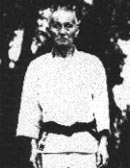
Founder of the Wado-Ryu style, sensei Ohtsuka began martial arts training at six in Shindo Yoshin-Ryu Jujutsu, a traditional Japanese martial art form which modern judo was derived. By 1921, at the relatively young age of 29, he was awarded the coveted menkyo-kaiden, designating him the successor as master of this style. A year later he began karate training under Gichin Funakoshi, the man who introduced karate to Japan from Okinawa. He became one of Funakoshi’s senior students but eventually traveled to Okinawa to learn more deeply of karate from masters who had instructed Funakoshi. It was his belief that Funakoshi had over-simplified and over-modified several karate techniques and katas in the interests of teaching large groups of beginners. Sensei Ohtsuka combined his new knowledge of karate with several of his own adaptations from Japanese Bushido (the way of the warrior) martial arts to form Wado-Ryu karate.
Sensei Ohtsuka founded Wado-Ryu karate in 1939, which has become one of the four major styles of Japanese karate, the others being: Shotokan, Shito-Ryu, and Goju-Ryu. In the same year, Sensei Ohtsuka organized the All Japanese Karate-Do Federation, Wado-Kai, which serves as the worldwide sanctioning body for Wado-Ryu karate and it’s affiliates. As early as 1934 he had developed rules and regulations for competitive free sparring to be incorporated into his system, the first karate style to do so. These rules have been wholly or partially adopted by virtually all modern martial arts competitions. In 1972, Sensei Ohtsuka received the highest Japanese decoration from the Emperor for his contribution to karate as well as being designated the head of the all martial arts systems within the All Japan Karate-Do Federation.
1.Founder of Wado-Ryu (way of peace)
2.A student of Funakoshi
3.Blended Jui-Jitsu and karate techniques to form Wado-Ryu
4.First person to be awarded Meijin
Choki Motobu (1871-1944)
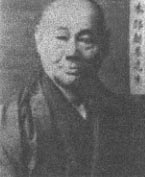
Choki Motobu trained very hard to become one of Okinawa’s most recognize fighters, even if he never originated a style of his own. His aggressive attitude made some Okinawan masters turn away, because they believe that Motobu just wanted to fight all the time. Born in Shuri, Okinawa, Choki was denied permission to learn his family style of te, a privilege granted only to the first son, his brother Choyu. Choki decided to teach karate to himself by secretly watching his brother and the other martial artists, and he learned the rudiments of karate and the use of the makiwara. Soon realizing that this type of practice was lacking in quality, Motobu sought out several of the leading instructors of the day and asked to be formally accepted as a student. Tomari-te’s Matsumora Kosaku and Shuri-te’s Itosu Ankoh finally agreed to let him train with them. But soon his reputation as a fighter and a troublemaker made him an undesirable student and once again he found himself training without an instructor. Never one to back down from a challenge, Motobu is believed to have lost only two fights during his lifetime. One of his many victories was a fight with a professional boxer whom he easily defeated. He dispensed with the boxer so handily that word spread quickly. Soon, Motobu and his style, Okinawa-te, were propelled into the public’s eye. Word went out of his accomplishments and he was besieged by students who wished to learn his fighting art. In his waning years, his attitude about karate changed and he focused more on the mastery of kata rather than kumite. Inner peace and self-discipline then took the place of overt aggression in his life. Motobu taught and influenced many students and future leaders of karate, including Nagamine Shoshin, Shimabukuro Eizo, Shimabukuro Tatsuo, Nakama Chozo, and Chitose Tsuyoshi.